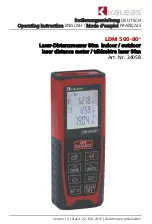
5-14
IM 760201-01E
Explanation
The phase difference
f
between the voltage and current indicates the position of the
current phase relative to the voltage of each element. You can select the phase display
format from one of the choices below.
• 180 Lead/Lag
If the current phase is in the counterclockwise direction with respect to voltage, the
current is leading (D) the voltage. If the current phase is in the clockwise direction with
respect to the voltage, the current is lagging (G) the voltage. The phase difference is
expressed by an angle between 0 to 180° (see appendix 3 for details).
• 360 degrees
The phase difference is expressed as an angle between 0 and 360° in the clockwise
direction.
Note
• If the measured voltage or current value is zero, “Error” is displayed.
• When both the voltage and current signals are sinusoidal waves and the ratios of the
voltage and current inputs with respect to the measurement range do not differ greatly, the
phase difference
f
lead and lag are still detected and displayed correctly.
• If the computation result of power factor
λ
exceeds “1,”
f
is displayed as follows:
• If the power factor
λ
is greater than 1 and less than or equal to 2,
f
returns 0.
• If
λ
is greater than 2,
f
returns an error (“Error” is displayed).
• The phase differences,
f
U and
f
I, of harmonic orders 1 to 50 of the voltage and current are
always displayed using an angle between 0 and 180° (no sign for lead and negative sign for
lag).
5.5 Selecting a Phase Difference Display Format
















































